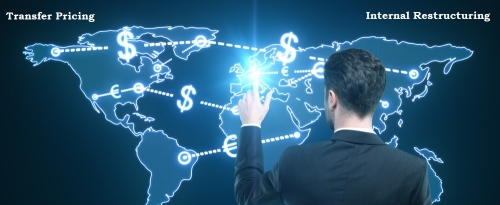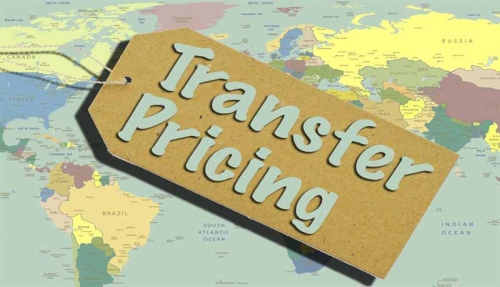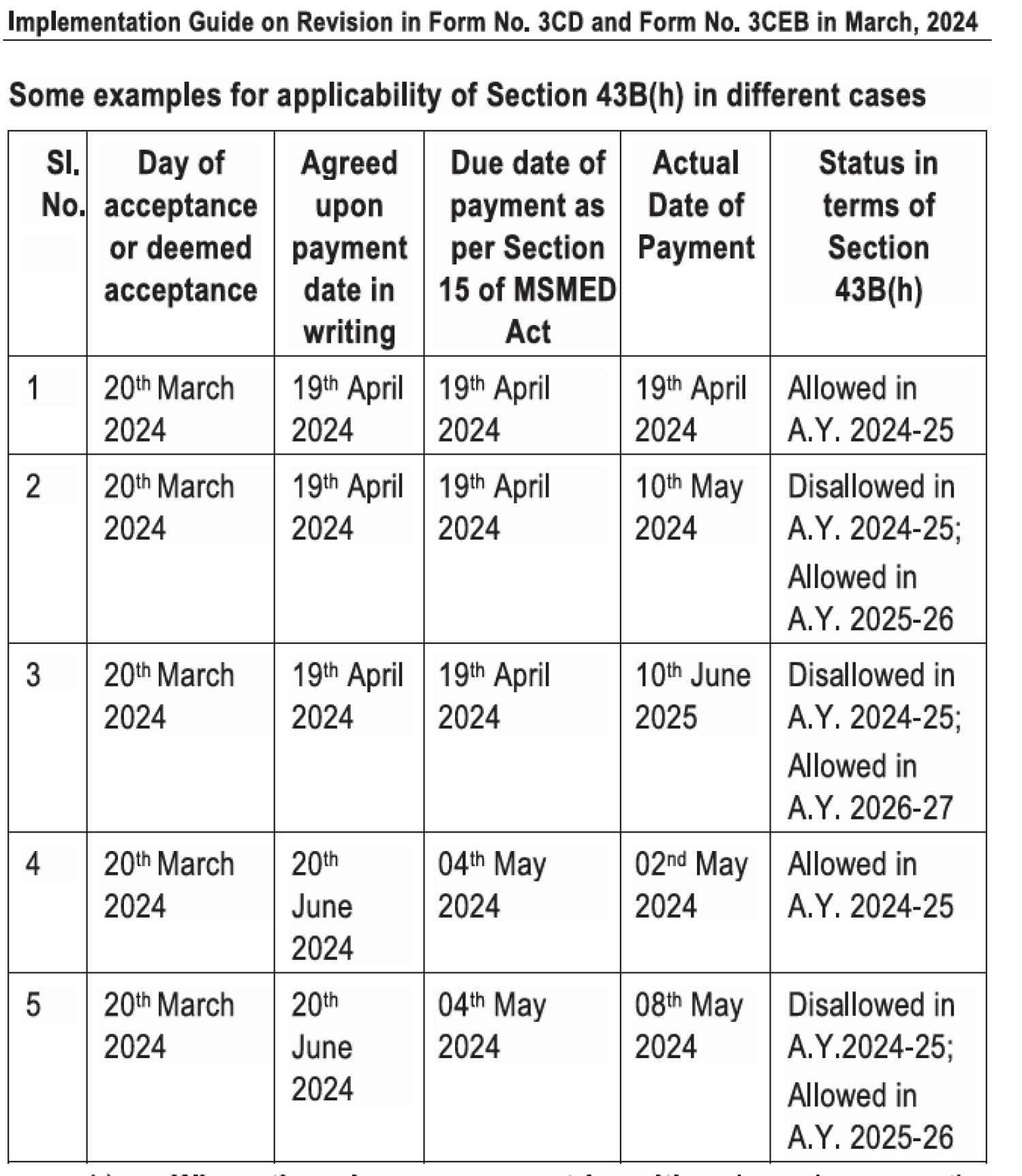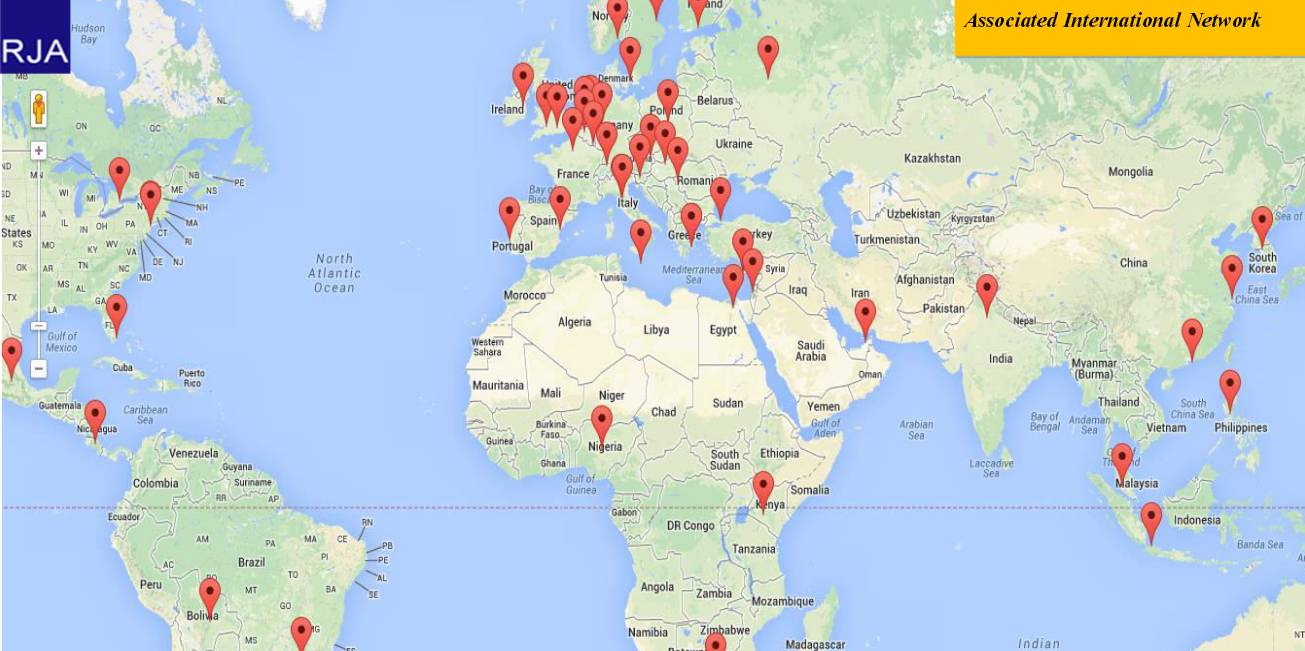Table of Contents

RULES, PENALTIES, METHODS, DOCUMENTATION REQUIRED IN TRANSFER PRICING
What Is Transfer Pricing, Exactly?
-
Transfer pricing refers to the prices that related parties charge one another for goods and services passing between them. Transfer pricing is a method of accounting that reflects the price charged by one division of a company to some other division for goods and services provided.
- Transfer pricing allows the determination of prices for goods and services exchanged between subsidiaries, affiliates, or companies under common control that are part of the same large company.
- Businesses can save money on taxes by using transfer pricing, but tax authorities may challenge their claims.
What exactly is Transfer Pricing?
- Transfer pricing is a tax and accounting practise that allows for the pricing of transactions within businesses and between subsidiaries that share common control or ownership.
- Transfer pricing encompasses both domestic transactions and cross-border transactions.
- A transfer price is the cost of charging some other division, holding company or subsidiary company, for services provided.
- Transfer prices are simply a reflection of the market price for that good or service. Intellectual property, such as research, patents, and royalties, can also be subject to transfer pricing.
The most common application of the transfer pricing rules is the determination of the correct price for sales between subsidiaries of a multinational corporation. These prices can be used to shift profits to tax-favored countries,
if in a transaction between a subsidiary in high-tax countries and another in a low-tax country, the high-tax subsidiary charges a price below the “true” price, some of the group’s economic profit is shifted to the low-tax subsidiary. Obviously, taxpayers would want to engage in this sort of behavior because it can significantly reduce their taxes.
If there were no limitations on this behavior, the entire income of multinational corporations would be taxed at the lowest tax rate in the world to zero rates of taxation. Consequently, most countries have some set of tax rules that regulate the prices that related persons can charge one another.
From past experience, it has been noticed that foreign multinational enterprises adopting the following practices to avoid tax payments: -
- Manipulation of prices
- Manually inflated rent and interest
- Double payments for management charges or payment of unknown services and non-exist services.
- Agreement for shift the sources of income etc.
So to stop this type of wrong practicing transfer pricing provisions are made by tax authorities.
Section 92 of the income tax act deals with the rules of TP.
Rules of section 92 are as follows:
Following conditions have been satisfied for applicability of section 92:
- The transaction will be done between a resident and a non-resident.
- The connection between the above two is very close.
- The business condition of the resident person is that produce no profit or less than normal profit
If the conditions (i) & (iii) were satisfied, then the Assessing Officer under the Act has power:
- to determine the number of profits, which is reasonably assumed to have been derived from such business.
- to include such an amount in the total income of the resident.
Documentation Requirements to be verified Rule 10D (1)
Following are the compulsory documentation required by law: -
- Description of Ownership Structure (Step I)
- Profile of Multinational Group (Step II)
- Description of Business (Step II)
- Nature & Terms of International Transactions (Step III)
- Description of Functions, Risks & Assets (Step IV)
- Record of Economic & Market Analyses, if any (Step III & IV)
- Record of Uncontrolled Transactions & Comparability analysis (Step V)
- Description of Methods considered (Step VI)
- Record of Actual working (Step VII)
- Assumptions, policies, Price negotiations, if any. (Step II & IV)
- Any other information, data or document.
Benchmarking Methodology
- Methodology for comparing international transaction of a tested party to that of comparable transaction
- Methods – CUP, RPM, CPM, PSM, TNMM
Choice of benchmarking methodology
- Depends on the availability of data
- Depends on the comparability of data
- Depends on the reliability of data
- Depends on the adjustability of data
BEST BENCHMARK UNDER TRANSFER PRICING FOR INTEREST-FREE LOAN
The fair market value of goods can be determined by the following methods: -
- Compare the current market price of goods to the transfer price and make the adjustment in quality, quantity, time of sale, and other factors.
- Show the appropriate mark up of factors from resale price to outside parties, especially the price at which goods are sold to non-associate third parties.
- In the case of a manufacturing concern, estimate a reasonable profit of concern and added to the cost.
- Compare the price of goods with the price of goods set by custom authorities for the purpose of levy and collection duties imposed by customs authorities.
- Compare the goods price with value decided by insurance companies.
Transfer Pricing Process: -
- Gathering Background Information
- Functional Analysis
- Manage the Process
- Benchmarking
- Documentation
- Chartered Accountant’s Report
Documentation requirements for TP:
Factual and Functional Analysis: In a transaction between related parties, compensation will reflect the functions that the parties perform taking into account risks assumed and assets used.
Description of the company and the group: Description of Outline of the business, Structure of the organization, Legal ownership within the MNE Group, Overview of financial key figures.
Industry analysis: it includes details about competitors, market and trends, added values, USPs.
Overview of intercompany transactions: Giving details of all transactions which is related to the companies.
https://carajput.com/blog/three-tier-tp-documentation-threshold-requirement/
Economic Analysis:
Selection of most appropriate method among all the following methods: -
Comparable Uncontrolled Price (CUP) METHOD: The CUP method evaluates the arm’s-length character of a controlled transaction by comparing the price and conditions to the price and conditions of similar transactions between the taxpayer and an unrelated party, or between two unrelated parties. this method is the most direct and reliable way to apply the arm’s-length principle and to determine the prices for the related party transactions.
Computation of Arm’s length price is as follows: -
- Compute the price to be charged or paid for the transfer of property or provide the services in a comparable uncontrolled transaction.
- Such computed price is then adjusting to account for functional differences between comparable uncontrolled transactions and international transactions. That will affect the price of the open market
- That adjust price is Arm’s length price.
COST PLUS METHOD: this method is used to test the activities of manufacturing entities by comparing gross profits to the cost of sales. This method is less likely to be reliable if material differences exist between the controlled and uncontrolled transactions with respect to intangibles, cost structure, business experience, management efficiency, functions performed, and products.
Computation of Arm’s length price is as follows: -
- Compute the direct and indirect costs of production for property transferred or service provided to associate enterprises.
- Compute the normal gross profit of such cost which will incur from the transfer of goods and services to unrelated enterprises.
- Such computed profit is then adjusting to account for functional differences between comparable uncontrolled transactions and international transactions. That will affect the profit of the open market
- The cost that will be calculated above will be added to the adjusted profit.
RESALE PRICE METHOD: The resale price method is normally used to test gross profits earned by sales and distribution entities. This method compares gross profit relative to the turnover of the tested party to gross margins earned by comparable third parties.
Computation of Arm’s length price is as follows: -
- Firstly, compute the price at which property purchased or services are obtained from associate enterprises sell it to unrelated enterprises.
- The resale price is reduced by normal G.P. accruing during the purchase and resale of similar goods in a comparable uncontrolled transaction.
- Then reduce all expenses incurred during purchase.
- Such computed price is then adjusting to account for functional differences between comparable uncontrolled transactions and international transactions. That will affect the price of the open market
PROFIT SPLIT METHOD: this method will eliminate the effect on profits of special conditions made or imposed in a controlled transaction by determining the division of profits that independent enterprises would have expected to realize from engaging in the transaction or transactions.
Computation of Arm’s length price is as follows: -
- Determine the net profit of associate enterprises that will arise from international transactions.
- Determine the relative contribution made by each of the associated enterprises for earning combined profit.
- Divide that combined profit in the proportion to their contributions.
TRANSACTIONAL NET MARGIN METHOD: This method compares the tested party’s net profitability on a controlled transaction to the net profit obtained by broadly similar uncontrolled companies on similar transactions.
Computation of Arm’s length price is as follows: -
- Determine the net margin earned from an international transaction.
- Determine the net profit margin earned by the enterprises or by unrelated enterprises.
- Adjust the net profit margin computed above in step 2 for the account of differences.
- The net profit margin will be the same as calculated in step 1.
After the selection of appropriate methods applies the selected method inefficient manner.
Penalty Under Transfer pricing : -
for Failing to submit CA Report
Entities entering into an international transaction are required to obtain a report from a chartered accountant. Failure to furnish a report from a chartered accountant can attract a penalty of Rs. 1,00,000
for Not Maintaining Required Documents
As mentioned above, entities entering into international transactions are required to maintain certain documents as listed above. Failure to maintain such document or failure to report or furnishing incorrect information can attract a penalty of up to 2% of the value of each transaction, where noncompliance exists.
for Not giving Documents to tax authorities within the time
Tax authorities may demand any related information or documents in the course of any proceeding, from any person who has entered into international transactions. The taxpayer must furnish such information or document within a period of 30 days from the date of receipt of a notice. Failure to furnish information can attract a penalty equal to 2% of the value of the specified transaction for each such failure.
Case law and judicial pronouncements: -
Analysis of tested party’s accounts – whether accounts are to be split vis-à-vis international transactions or profits of the entity as a whole to be analyzed
Judicial pronouncement:
- Maintenance of split financials warranted for justification of functionally different activities - use of whole entity approach not appropriate (Manufacturing and trading can’t be aggregated for benchmarking purposes – UCB India)
- ALP of each class of international transactions to be considered separately unless the different classes of transactions are interlinked and cannot be evaluated separately (Development Consultants and Star India)
Documentation to be maintained for justifying arm’s length price
Judicial pronouncements:
UCB India
- Documentation maintained to be the extent relevant to Sufficient compliance with Rule 10D.
- The documentation mentioned in all clauses of Rule 10D need not be maintained if not relevant
- What needs to be seen is the substantial compliance by the taxpayer with regard to the maintenance of documents (UCB India)
Cargill India
- Documents and information to be kept and maintained as per Rule 10D
- Voluminous, and all the sub-clauses attracted very rarely
- Taxpayer and tax authorities are required to consider only relevant information and documents needed for determining ALP
- Not possible to casually ask for information under all the clauses
Functional Analysis
Judicial pronouncements:
- Functional analysis of potentially comparable companies should be taken into consideration and compared with that of the tested party (Aztec India, E-gain Communication, Skoda, UCB India)
- In case of differences in the functional profiling of the comparable companies vis-à-vis the tested party, adjustments should be made to the comparable companies (E-Gain, Sony India, Skoda Auto)
- The Selection of the tested party is important for the purpose of determining the Most Appropriate Method. The selection of the tested party depends on the following:
- Least complex of the entities i.e. entity performing simpler functions, assuming lesser risks, owning routine assets
- Comparable data with regard to the entity is easily available (Development Consultants)
- A foreign entity can be selected as the tested party if it’s the least complex entity
- However comparable data in this regard need to be provided by the taxpayer (Ranbaxy India)
Selection of Method
Judicial pronouncements: -
-
It is imperative for the department to reject the taxpayer’s analysis vis-à-vis the selection of the most appropriate method, before selecting any other method as the most appropriate method (MSS India)
-
Transaction based methods are to be preferred over profit-based methods (The aforesaid observation is not in consonance with Indian TPR which does not provide any hierarchy amongst the methods)
-
Loss incurred by taxpayer does not lead to the foregone conclusion that the taxpayer’s international transactions are not at arm’s length.
-
However, the taxpayer needs to demonstrate the reasons for the loss and will be required to justify based on documentation in this regard.
-
Status of the company vis-à-vis industry performance / economic slowdown
-
Business strategy – market penetration, diversification, etc.
-
Start-up phase
-
Capacity utilization
-
Management inefficiency?
-
Government Policy
If you are confused application of the provisions of transfer pricing auditing or cross-border transactions???
With our well-structured team, a network of specialists, technical know-how, ample infrastructure, and software solutions, we are able to support you with this complicated task in a smooth and productive manner. In this regard, our offerings in the areas of transfer pricing, international taxation & FEMA are including:
- Certification in Form 15CB for international remittances
- FEMA Consultative
- Structure of international transactions
- Advisory on International Taxes
- Transfer price audit form 3CEB u/s 92E
- Transfer Price Report U/S 92D
- Master File Compliance Form 3CEAA & 3CEAB u/s 92D
- Country by Country Reporting (CBCR) in Form 3CEAC, Form 3CEAE & Form 3CEAE u/s 286
Questions you should asked yourself:
- Does your company participate in any of its Group companies' international transactions?
- Does your company conduct transactions between companies that affect operating outcomes?
- Does your company provide/receive services free of charge from affiliates?
- Does your business pay or receive intangibles charges or costs?
- In past few years, has your company suffered operational losses?
- Is your business plan currently structured by a multinational company?
- Do you restructure global operations because global circumstances change?
- Do you restructure Indian operations with the company's key managers?
If you said "yes" to one or more of the questions above, your organization will almost certainly need a transfer pricing review.
What Rajput Jain & Associates Offers:
One of the most essential aspects of our transfer pricing expertise is the integration of tax and economics. We can build and apply transfer pricing approaches that are analytically solid, flexible enough to cope with "real world" scenarios, and fully compliance with transfer pricing requirements thanks to this unified approach. Furthermore, our clients benefit from a creative and dynamic tax planning process as a result of this strategy. We provide guidance and assistance in the following areas as part of our transfer pricing service:
-
TRANSFER PRICING ISSUES / CONCEPTS /STRATEGY:
The transfer pricing team at Rajput Jain & Associates has extensive experience in the industry, and we have a number of Tax Consultants working under our banner, providing assistance and professional counseling on a variety of transfer pricing challenges and concepts. Our primary goal is to research the industry, billing methodologies, transactions, pricing, and the use of the proper Transfer Pricing Method. Through effective tax planning, RJA provides transfer pricing solutions and methods that react to Associated Enterprises' aims and national tax authority's needs. We have analyzed various industries, their turnovers, business activities, profit margins, trends, and quarterly, half-yearly, and annual reviews on the industries' progress, both statistically and theoretically predicting the correct picture and risks in various businesses at large. In order to optimize revenue allocation between group businesses, our team assists in the study of alternative company structures from a transfer price planning perspective.
-
TAX PLANNING WITH INTEGRATED TRANSFER PRICING:
Rajput Jain & Associates specializes in solutions that allow foreign enterprises to examine their tax situation holistically and generate benefits upwards through the organization's structure. We combine tax strategy planning, coordination, and execution to provide flexible solutions that successfully manage corporate changes.
-
RISK MANAGEMENT OF TRANSFER PRICING:
Rajput Jain & Associates offers clients a practical and consistent approach and solutions for diverse risk appraisal and transfer pricing strategies on diverse risks, guiding them to meet regulatory requirements and comply with arm's length standards. By evaluating current transfer pricing procedures, RJA assists corporations in building a response against potential future revenue authority investigations. The potential dangers can then be assessed, and if necessary, corrective action taken. Our clients can confront this dynamic issue with confidence because to our worldwide controversial solutions and resources.
-
DISPUTE RESOLUTION PANEL / APPELLATE AUTHORITIES:
Cases involving transfer pricing would be brought before Appellate Authorities, Dispute Resolution Panels, MAPs, and other bodies with thorough study of the facts, statistics, data analysis, and comparable analysis, as well as the consideration of new or additional evidence. Experts from our firm's Transfer Pricing Group will submit the cases to the authorities, and you will receive superior consulting.










